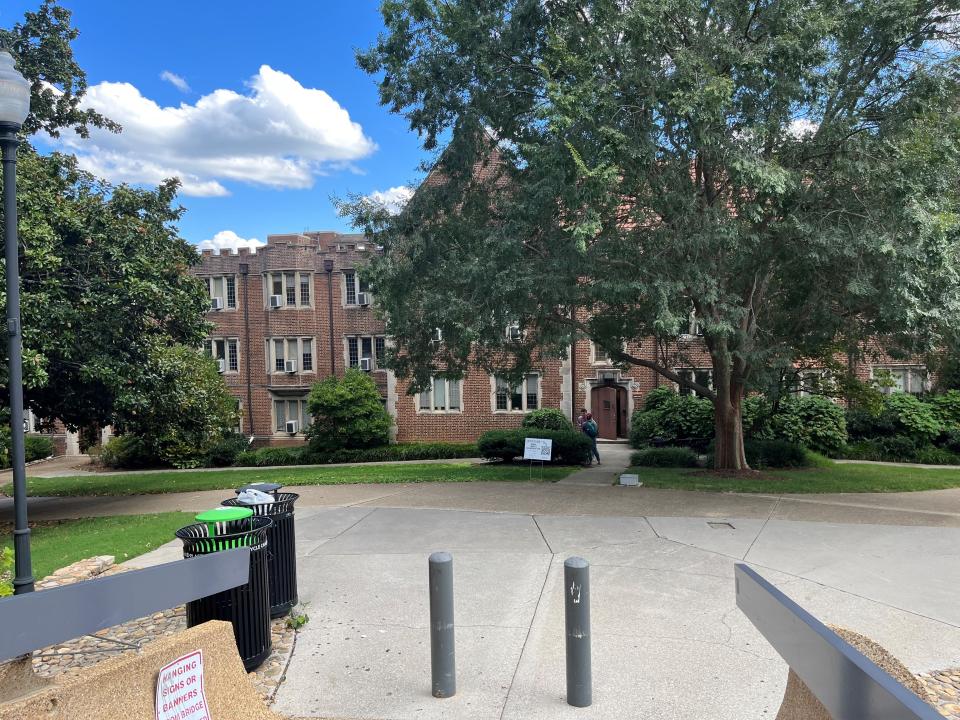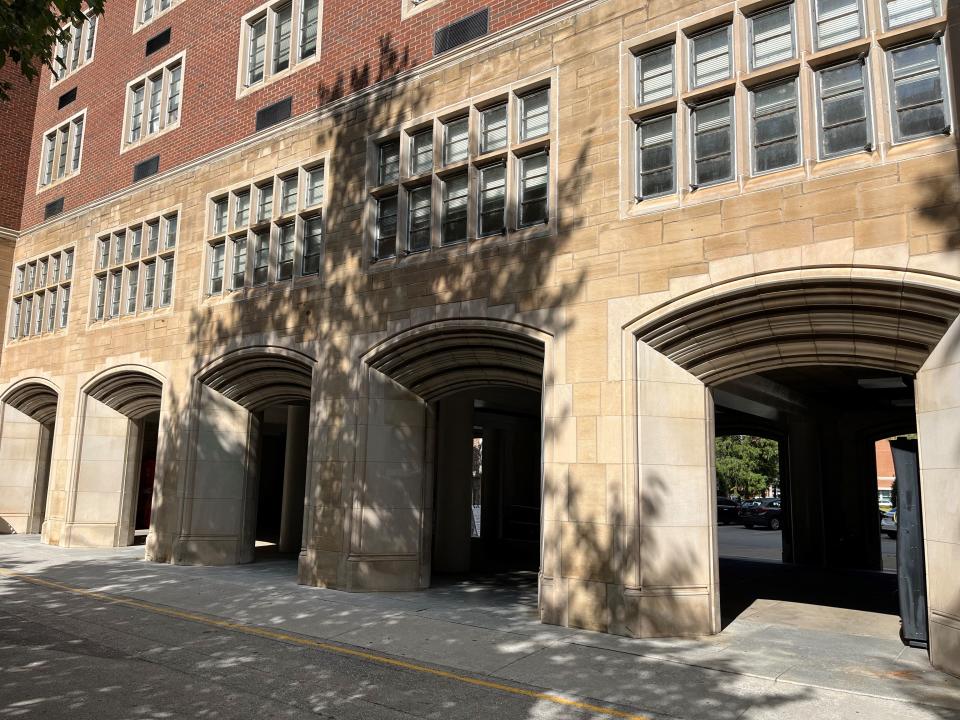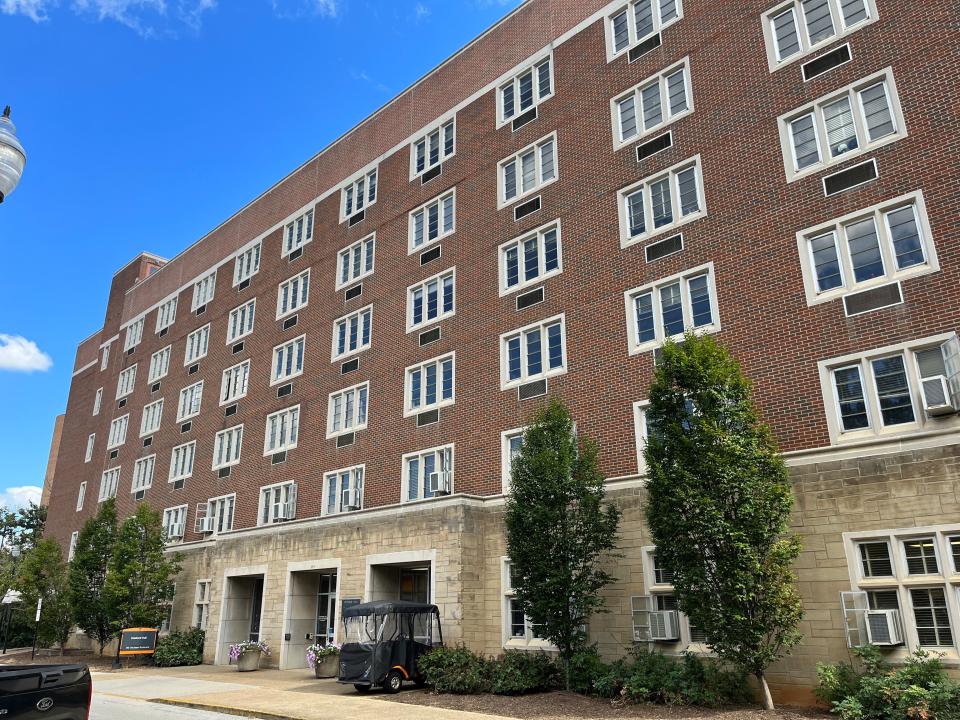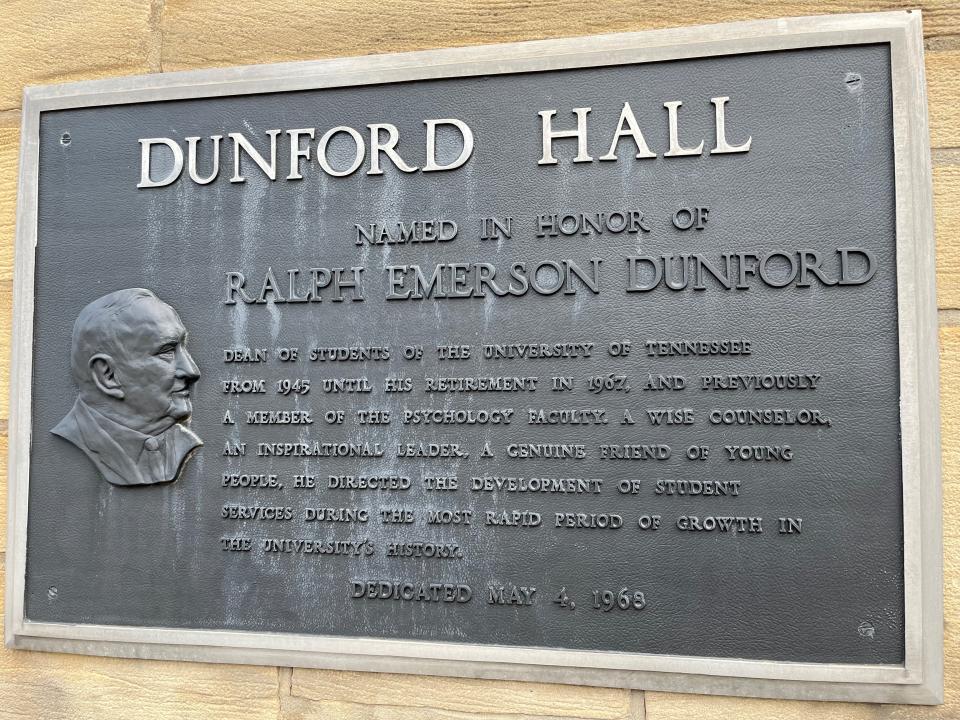University of Tennessee is razing three former dorms. Did you live in one of them?
Three University of Tennessee buildings that have created numerous memories for students and staff will soon be memories themselves.
UT recently announced that the Haslam College of Business is planning a large expansion across Volunteer Boulevard with a state-of-the-art building designed in part to meet the growing business school enrollment.
To make way for it, three buildings that have collectively sat in a horseshoe pattern near Cumberland Avenue for decades will be razed. They include the collegiate Gothic Henson Hall, opened in 1930, as well as the more midcentury-looking Greve and Dunford halls, completed in 1955 and 1963, respectively.
All three mostly brick structures were also designed by Barber & McMurry, which was headed until his death in 1962 by the respected architect Charles Barber.
Chris Cimino, the senior vice chancellor for finance and administration at UT, said officials put a lot of thought into the project before making the decision to put the business school addition there.

“The decision to raze any building is not taken lightly and is studied carefully,” he said, adding that the razing could begin as early as fall 2023.
Streaking on 'The Strip': UT students brought 1970s nude craze to Cumberland in a 'flash'
Related:What we know (and don't) about the University of Tennessee revamping its colleges
He went on to say that the buildings do not have structural issues but have suffered from deferred maintenance.
Knox Heritage executive director Christine Cloninger expressed disappointment at the news, pointing out that the university a few years ago had used a $150,000 Getty Foundation grant to help it document its numerous buildings worthy of preservation.
"Knox Heritage is disheartened by the University of Tennessee’s plans to raze Henson, Dunford, and Greve Halls,” she said. “While we understand that buildings can become outdated, particularly as technological needs quickly advance, we had hoped that UT’s creation of the Campus Heritage Plan in 2009 would lead to historic preservation playing a larger role in campus planning.
“Our organization strongly believes that the campus’ rich architectural heritage can serve as both an evocative sense of place for alumni and an asset for cultivating future Vols."

As a growing and expanding university with landlocked space, UT has had to make similar decisions with other historic buildings in recent years.
Of these three buildings in question now, all share the history of originally being women’s dorms, despite differences in age and looks.
Henson had been built in part with a gift from the estate of Martha Henson, a Knoxville woman and UT alumna, whose husband had headed a shoe company. The gift’s value had been deflated during the Depression, but other funds were also secured.
Its history also includes housing male air cadets briefly during World War II and becoming a men’s dorm in 1965. It began serving the university with other uses beginning in 1968 and now houses the College of Social Work.
Featuring arches and other architectural details and located on a tree-covered lawn, it has been quite visible over the years alongside Cumberland Avenue which is changing elsewhere with more off-campus student apartments planned.

Greve Hall, at the western top of the horseshoe, features both arches made of precast stone like an older-style building and a midcentury-style covered breezeway. Originally called West Hall, it was renamed in honor of the former dean of women and colorful character Harriet Greve in 1963.
It became a coed dorm in the 1990s, but in the last few years has served as office space for everything from the Office of Information Technology to the Student Success Center, according to a directory there.
Dunford Hall was originally called West Hall B but was dedicated in 1968 in honor of former dean of students Dr. Ralph Emerson Dunford. This building with square-off entrance arches surrounded with regular and precast stone and featuring an open-air space at the roof was a women’s dorm until 1984.
Another person concerned about the fate of Dunford – but for a different kind of history-related reason – is Dr. Monica Black. She is a modern European and modern German history professor and said the UT Department of History has comfortably used Dunford for more than 25 years.

While admitting that the building has some cracks and maintenance issues and is not energy efficient, she said it has offered ideal office and conference space for the several dozen teaching faculty and graduate teaching assistants.
“Our students and faculty are all together and can converse on a regular basis,” she said, adding she also likes the greenspace around the three buildings.
She said she and other professors are concerned because the department has not received any update on future office space. “There are no firm plans of any kind to put us anywhere,” she added.
While UT officials work to figure out the future, the rich past of the three buildings will likely be a focus due to the countless alumni and staff who lived and worked there and have some sentimental attachment.
As Cimino said of two of the buildings and likely meant it as well for the third, “Dunford and Greve Halls have served the university well.”
This article originally appeared on Knoxville News Sentinel: University of Tennessee to demolish three landmark dorms

